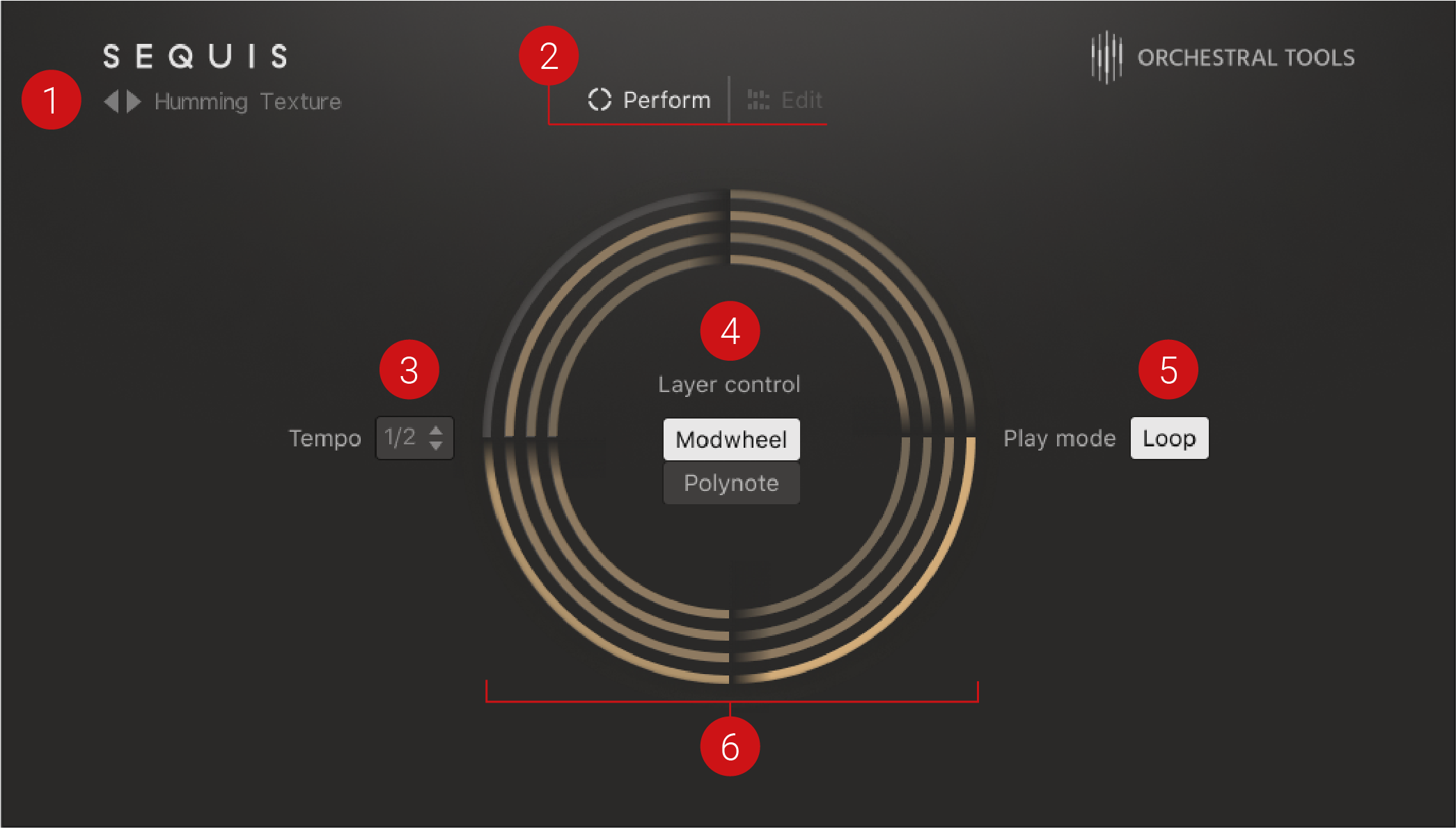SEQUIS Overview
SEQUIS combines an intuitive sequencer with four layers of acoustic instruments that can be blended using polyphonic and monophonic playing modes.
SEQUIS offers a clear interface built around the main Perform view and optional Edit view. The main Perform view lets you quickly select presets (also called Snapshots) from the built-in browser. A visualization of the four active sound layers and the four segments of the sequence occupies the center of the instrument. Here, you can choose between the instrument’s polyphonic and monophonic layer controls, allowing you to blend the layers of sound using a modulation wheel or with notes. You can also set the Play mode to loop the whole sequence to provide a continuous sound.
In the Edit view, you can design and tweak your sequenced patterns, swap the source articulation and add effects to each layer. The Edit view comes with a wide variety of controls that also let you dial in swing, activate triplet patterns, and add accents to specific notes. Sounds can also be individually processed with pro-level reverb, filter, and delay effects, while layers of sequenced patterns can be looped and reversed, giving you a lush playground of evolving, syncopated loops and multilayered one-shots.

The Perform view
Snapshots: Displays the current Snapshot. Snapshots are your own personalized user presets, which you can save and recall at any time. The preset arrows to the left of the Snapshot name load the previous and next Snapshot. To open the Preset Browser, click the name of the displayed Snapshot. The Browser contains a list of all sound categories and presets. For more information, refer to Preset Browser and Snapshots.
Main Navigation: Selects between two views; Perform, and Edit.
Perform: Switches the instrument to the main Perform view. Here you can quickly select the instrument's Layer Control mode, Play mode, and adjust the Tempo of the sequence. In this view, you have an active visualization of the four layers and sequence segments that make up a Snapshot.
Edit: Switches to the Edit view. In the Edit view, you can design and tweak your own sequenced patterns with an array of easy-to-use controls. For more information, refer to Edit View.
Tempo: Adjusts the playback tempo of the sequenced pattern. The available values are 1/2x, 1x, and 2x.
Layer Control: Blends up to four sound layers using the Modwheel or Polynote features:
Modwheel: Sets the Layer control to the Modwheel. Increasing the modulation wheel value on your MIDI controller or using CC messages in your DAW activates Layer 1 through to Layer 4 in succession.
Polynote: Sets the Layer control mode to Polynote. Increasing the amount of simultaneously played notes activates Layer 1 to through to Layer 4 to playback in succession.
Play Mode: Sets looped playback to on or off. When set to off, the sequence will end after one cycle. The next note pressed triggers the sequence again.
Circular Animation: Visualizes active sound layers and segments of the sequence from the current snapshot. The ring of the circles radiating outwards represents sound layers 1–4. With the Layer Control mode (4) set to Mod wheel, each layer of sound is added or removed as the modulation wheel is adjusted. In Polynote mode the layers are added or removed as each new note is played. In addition, the four segments of the circle represent each segment of the sequence. Segments 1–4 of the sequence are highlighted on the circle in a clockwise motion when notes are played. The sound source for each layer and the sequence can be changed in the Edit view. For more information on Edit view, refer to Edit View.